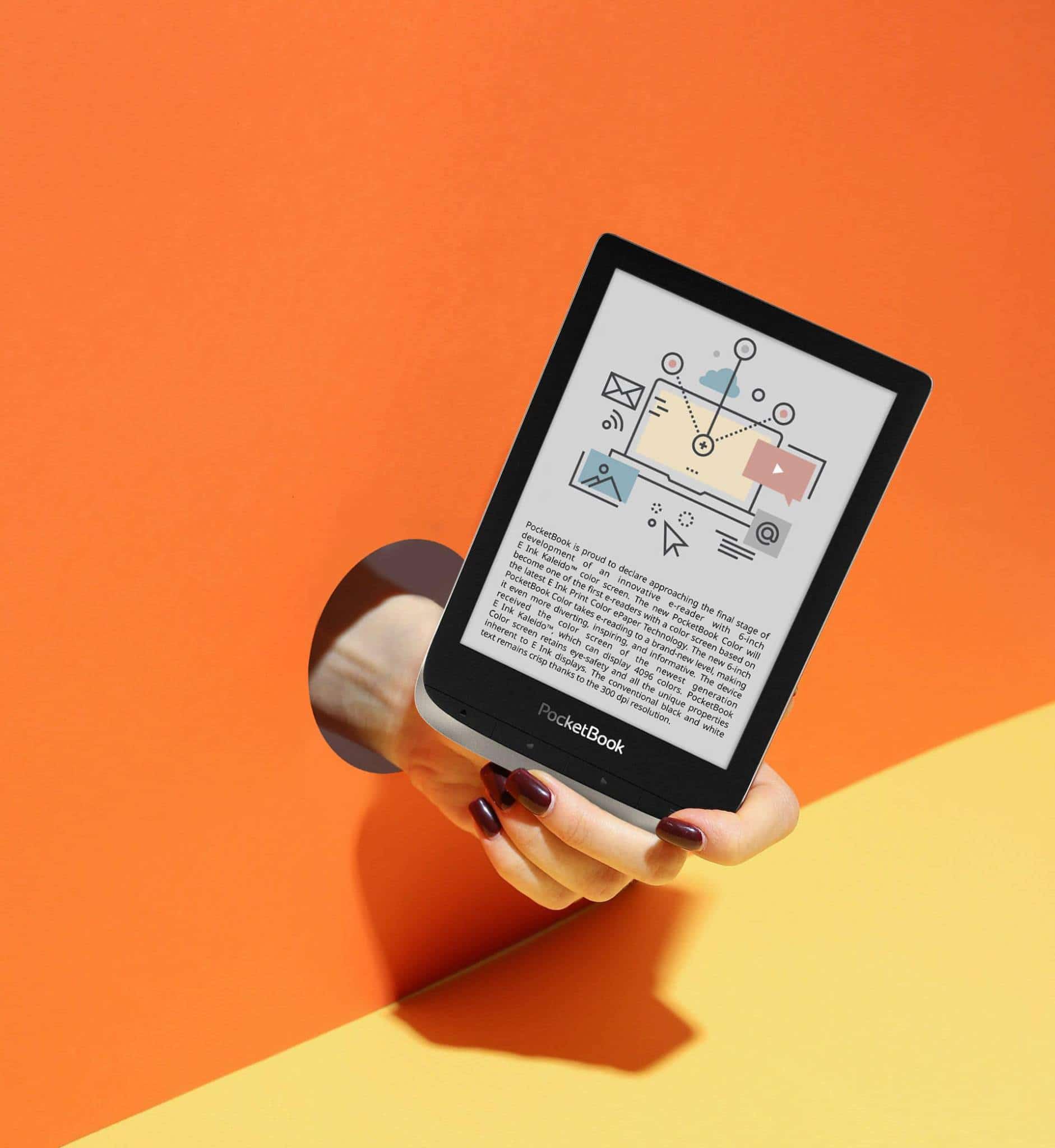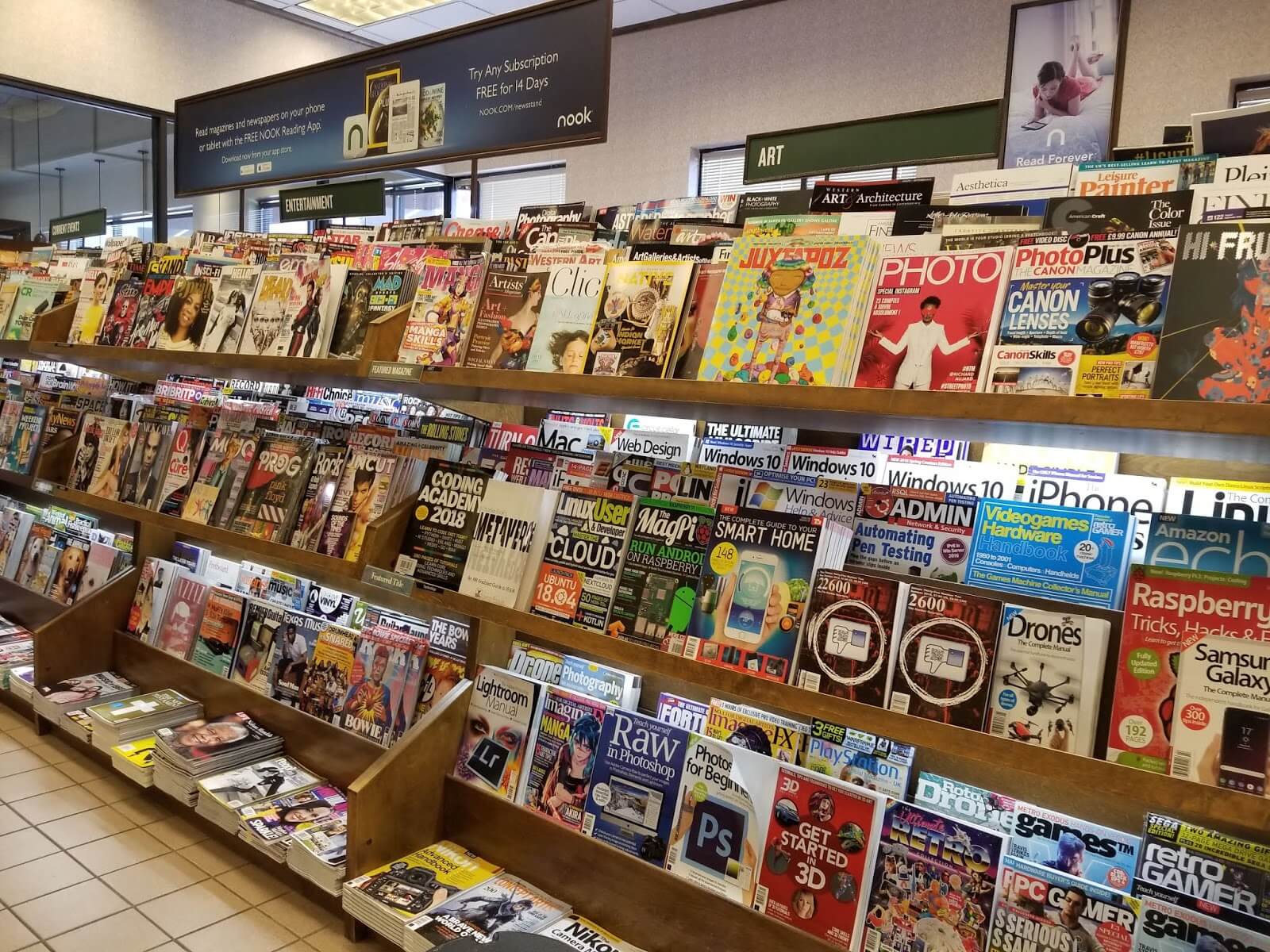
There are a handful of color e-readers that have been announced and more will be released over the course of the year and many people are confused on exactly what the underlying technology is. There are terms batted around such as Color E INK, Kaleido or Print Color. Good e-Reader will seek to dispel any questions or concerns.
E INK has confirmed with Good e-Reader that Kaleido is the marketing name for Print Color, it is easier to roll off the tongue and simple for e-reader companies to promote their new device. Just Print Color and Kaleido are the exact same thing. If you hear anyone referring to color e-paper in 2020, it basically just refers to the new tech, which again is Kaleido or Print Color.
Kaleido utilizes a new printed Color Filter Array (CFA) technology in conjunction with E Ink’s second generation, faster and brighter, Carta 1100 ink. The new printing process alleviates the need for a glass-based CFA, making the displays thinner and lighter than previous generations, while simultaneously having higher optical quality. This allows e-reader companies to combine the power of traditional black and white displays with color for a more fully realized ebook shopping experience. In addition, E Ink’s faster ink enables quicker updates for animations and video. With this new color technology, E Ink’s eNote product lines are now able to introduce writing tablets with color highlighters, pens and markers, giving new options for education and professional devices.
Kaleido e-paper can produce color for each pixel that is displayed on the screen. This includes red, green, blue, black or white. Colors can be combined to give you different colors or shades. The way it works is if you want light blue, blue will be toned down and white will be brighter. If you want orange, then yellow and red would be blended. It will ultimately display over 4,096 different color combinations.
E INK has told Good e-reader about the grayscale and color system. “This is simplest way to think of it. The B/W ePaper module is capable of producing 16 grayscale which is 2^4. E Ink Kakeido is a non-glass-based CFA comprised of RGB. Each of the RGB has 16 levels of intensity and so 2^4 x 3 = 4096 colors.”
When an e-reader company is designing a product, it will have multiple screen layers. One will be the E INK Carta layer that is capable of displaying 16 shades of gray and 300 PPI. Carta and Carta HD have compatibility with the E INK Regal waveform controller, that results in fast page refreshing and no ghosting. The second will be the color filter layer that sits on top of it and will be responsible for generating the colors and generally it will only display 100 PPI. If the product is a digital note taking device, that can be used to draw things or make notes with a stylus, it will also have a WACOM active digitizer layer.
I have talked with many companies that are involved in using color and basically the color mode will always be on, there will be no switch or toggle button to shut it off. The standard E INK B&W mode will also always be on.
Let’s talk about use case scenarios. Say you are reading a standard ebook on a color e-reader. The cover art on the first page will be in color and display it in 100 PPI. When you turn to a page that only has black text on a white background it will display all of the content at 300 PPI, so text will be razor sharp. PDF rendering engines will display PDF files as an image, because that is basically what they are. These files will basically just display 4,096 colors at 100 PPI. If the PDF if a scanlation or was just made into B&W with no colors, it will display as normal.
If the e-reader runs Android, it will also display the app icon in 100 PPI. The app itself will be able to display both colors and B&W text at the same time, but it depends on the app and app creator. Webtoon apps traditionally display content in B&W and ditto with most manga apps, so you will get razor sharp imagery. Magazine, newspaper and news apps will also display a combination of black and white text and color at the same time. Apps like Kindle, Libby, Overdrive, Kobo and Nook were developed for smartphones and tablets with an LCD or OLED screens. So many of these will have a colored background, colored UI and same with the shopping experience, everything will be displayed in full color.
I believe that 2020 will be the year of color e-paper. This is basically the second coming and the screen tech is very cheap, which is why you see six inch devices being sold for around $220. Previous color E INK technology came out in 2011 and was called E INK Triton. The Pocketbook Color Lux, Jetbook Color, Hanvon color were examples of devices that were released with this tech, but they were all really expensive, around $600 to $800 and the screens they used was E INK Pearl. This resulted in lackluster page refresh speed and resolution. Triton never took off because it was too expensive to make and colors looked washed out. Although it was capable of displaying four thousand colors at the time, the final product was less than half of that.
In the future, when Good e-Reader refers to modern day color e-paper, it will be called Kaleido. This will help to draw the distinction between new devices using it vs the older technology that is no longer in service.
Michael Kozlowski is the editor-in-chief at Good e-Reader and has written about audiobooks and e-readers for the past fifteen years. Newspapers and websites such as the CBC, CNET, Engadget, Huffington Post and the New York Times have picked up his articles. He Lives in Vancouver, British Columbia, Canada.
